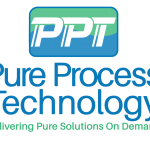
15 May 2019
If you conduct research in a chemistry lab or you perform solvent dispensing in your laboratory, here are some guidelines and instructions for the most effective way to dispense solvents and safely use solvent bulbs.
Crucial steps to keep in mind
1) Make sure that the volume of solvent in the bulb will meet your needs. If not, dispense more solvent into a clean, oven-dried solvent bulb. Never inject any solvent back into the bulb once you have removed it. Clean bulbs and adapters can be stored in an oven near the SDS. Use clean stopcocks and new septa. Precautions: Never use recovery flasks with star cracks or other defects!
2) Always use a clean, oven-dried syringe needle.
3) The Teflon stopcock should be open already to allow the Nitrogen line cannula into the bulb. Insert the needle through the septum and into the inlet.
4) Purge the needle with the Argon/Nitrogen gas in the solvent bulb (3-4 times). HOLDING onto the solvent bulb, push the needle through the stopcock opening and into the bulb. Open the stopcock further if required to get your needle into the bulb. Remove the volume of solvent you want. DO NOT inject any solvent back into the bulb once you have removed it.
5) Holding the bulb, remove the needle from the bulb. Readjust the stopcock if you opened it further.
6) Larger volumes of solvent can also be removed using the additional outlet at the bottom of bulbs. Simply open the Teflon stopcock and dispense solvent. Wipe up any spills you might have in the delivery process.
7) Out of courtesy for your co-workers, if you empty a bulb of a frequently used solvent, you should clean the used bulb, return it to the oven adjacent to the SDS, and refill a fresh solvent bulb.

Trouble Shooting Tips
We suggest you keep a trouble-shooting notebook near the SDS for group members to record problems, and solutions, they have had with the instrument. Make use of this notebook to maintain an up-to-date operational history of the system.
1) Maintain the Argon regulator and service the vacuum pump, if using a conventional pump. Most importantly, change the pump oil regularly.
2) Use the proper grade of solvent in the solvent kegs. DCM can be used with cyclohexane as a stabilizer but unstabilized is best. Do not use DCM stabilized with Methanol or Amylene. Contact PPT if you have questions or to get a recommended solvent list.
3) If solvent only dribbles out or doesn’t flow, and all the valves are open and the kegs are full, it is likely the filters need cleaning or replacement. DCM may have back siphoned because of its weight and low argon pressure.
4) Your system may have come with a heavy duty Ilmvac brand vacuum pump. If your pump vacuum degrades it may need to be cleaned by spraying acetone into intake port and allowing pump to pump itself dry.
Practice these procedures and follow these guidelines for safe, efficient solvent bulb handling and dispensing, your lab manager and colleagues will appreciate it.
Visit our dedicated SPS page for more information on our solvent purification and dispensing products. Review our solvent purification system training videos for best practices when using PPT purification /dispensing systems. While you’re visiting check out our latest innovative filtered, HVAC free dispensing system the PureCaptureTM SDS.

Does Your Project Water Distribu...
08 Jun 2019

Solvent Dispensing 101 – the Car...
15 May 2019

Hospital RODI Water System Proje...
18 Apr 2019

10 Apr 2019

27 Mar 2019